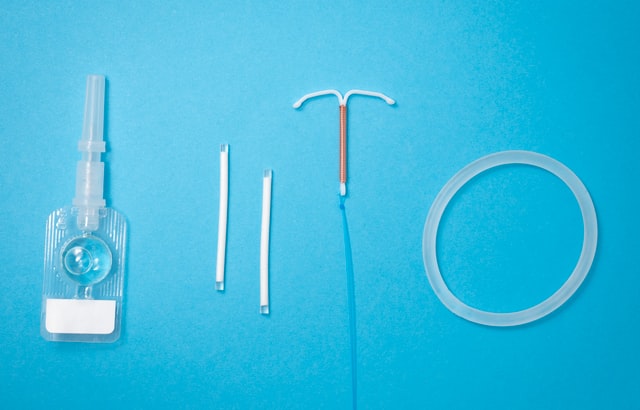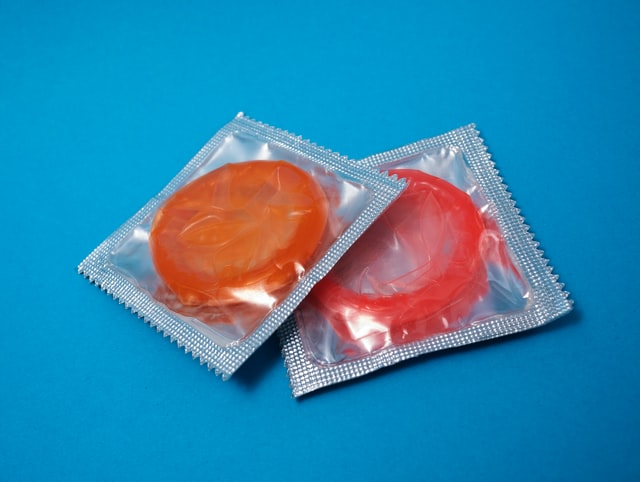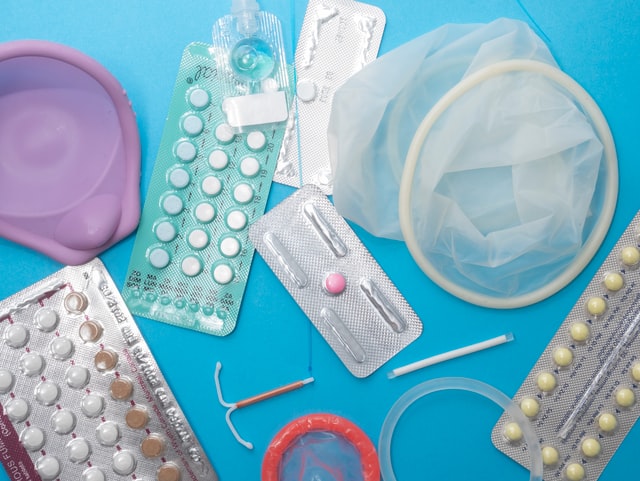Contraceptives enable people to make informed choices about their sexual and reproductive health. In almost all regions of the world, contraceptives are used by the majority of women in the reproductive age range (15-49 years) who are married or in a union.
There are many different types of contraceptives, but not all types are appropriate for all situations. The choice for the most appropriate method of contraception depends on several factors vis:
- Individual’s overall health.
- Age.
- Frequency of sexual activity.
- Number of sexual partners.
- Desire to have children in the future.
- Family history of certain diseases.
- How active you want to be involved in the contraction (User participation).
What is Contraception?
Contraception is defined as the intentional prevention of conception through the use of various devices, sexual practices, chemicals, drugs, or surgical procedures. Thus, any device or act whose purpose is to prevent a woman from becoming pregnant can be considered as a contraceptive.
Types
1. Long acting Reversible Contraceptives
-
-
Intra uterine devices (IUD)
-
IUDs are small devices, T or Y shaped plastics with copper wound around them, inserted into the uterus. This functions by changing the conditions in the cervix and uterus.
Thus preventing pregnancy as well as inhibiting the transit of sperm from the cervix to the fallopian tubes. IUD can last up to 10years but can be removed any time the patient wishes.
-
-
- Hormonal
-
Hormonal IUD releases a progestin hormone (levonorgestrel) into the uterus. The released hormone causes thickening of the cervical mucus, which inhibits sperm from reaching or fertilising the egg, and it also prevents the ovaries from releasing eggs.
The failure rate of a hormonal IUD is less than 1%; however, a small percentage of women may experience expulsion of the device and have to have it reinserted. This method is used in treating heavy menstrual bleeding because the hormone often reduces or eliminates uterine bleeding.

-
-
- Non-Hormonal
-
Copper IUD prevents sperm from reaching and fertilising the egg and it may prevent the egg from attaching in the womb. If fertilisation of the egg does occur, the physical presence of the device prevents the fertilised egg from implanting into the lining of the uterus. Copper IUD is not recommended for women who may be:
- Pregnant.
- Have pelvic infections.
- Has had a uterine perforation during previous IUD insertions.
- Not recommended for women who have cervical cancer or cancer of the uterus,
- Unexplained vaginal bleeding or pelvic tuberculosis.
-
-
Implants
-
Implants are implantable, flexible, matchstick-sized, plastic rods that is surgically inserted into the under the skin of the woman’s upper arm.
2. Barrier Methods
Barrier methods of birth control act as barriers to keep sperm from reaching the egg. Some barrier methods also protect against sexually transmitted infections (STIs).
A few barrier methods (spermicide, condom, and sponge) can be bought in most drugstores while others (diaphragm and cervical cap) must be prescribed by a health care professional.
Barrier methods are not as effective at preventing pregnancy as other birth control methods. Out of 100 women per year, 18 to 28 women will become pregnant when using barrier methods.
-
-
Male Condom
-
A male condom is a thin sheath made of latex (rubber), polyurethane (plastic), or natural (animal) membrane that is worn over the erect penis during sex. Latex and polyurethane condoms provide the best protection against many STIs, including HIV.
-
-
Female Condom
-
A female condom is a thin plastic pouch that lines the vagina. It is held in place by a closed inner ring at the cervix and an outer ring at the opening of the vagina. It provides some protection against STIs.
For both types of condoms, care must be taken to avoid spilling condom contents when the penis is removed after intercourse.
With the male condom, the penis should be withdrawn immediately after ejaculation while the condom’s rim is held firmly against the base of the penis; this precaution prevents the condom from slipping off and spilling semen.
The larger ring of the female condom should be twisted to prevent semen from spilling. A new condom should be used for each coital act.

Pregnancy rates at 1 year are:
- Male condom: 2% with perfect use and 18% with typical use
- Female condom: 5% with perfect use and 21% with typical use
-
- Spermicides
Spermicide is a chemical that inactivates sperm. Most spermicides in the United States contain a chemical called nonoxynol-9. Spermicide can be used alone or with all other barrier methods except the sponge, which already contains a spermicide.
When used alone, a spermicide should be inserted into the vagina close to the cervix. There are different kinds of spermicides available.
- Foam — Foams are inserted into the vagina with an applicator (like a tampon applicator) that comes with it.
- Cream or gel — Creams and gels are inserted into the vagina with an included applicator.
- Suppository — Suppositories are solid pellets that melt after they are inserted into the vagina.
- Film — Films are thin sheets that you insert with your fingers close to the cervix.
You need to wait 10 to 15 minutes after insertion for the spermicide to become effective.
-
-
Contraceptive sponges
-
The sponge is a round device made of soft foam that contains spermicide. It is inserted into the vagina to cover the cervix and keeps sperm from entering the uterus. The sponge does not protect against STIs, including HIV.
The sponge is less effective in women who have given birth. If you want to use the sponge after having a baby, you should wait 6 weeks after giving birth until the uterus and cervix have returned to their normal size.
-
-
Diaphragms
-
The diaphragm is a small, dome-shaped device made of silicone or latex that fits inside the vagina and covers the cervix. It must be used with spermicide.
There are two types of diaphragms. Both diaphragms are available by prescription only:
- Individually sized diaphragm, which must be fitted by a health care professional. If you gain or lose 10 pounds, have a baby, or have surgery on your abdomen or pelvis, you should be refitted because the size and shape of your cervix and vagina may change.
- One-size diaphragm, which fits most women.
The diaphragm must remain in place for 6 hours after sex, but for no more than 24 hours total. If you have sex again within this time frame, apply more spermicide with an applicator high up in the vagina without removing the diaphragm.
To remove the diaphragm, pull gently on the front rim. The diaphragm can be washed with mild soap and water and then rinsed off the soap well, and dry and put back in its case.
The diaphragm should be checked frequently for holes by holding it up to the light. Latex diaphragms should be replaced about every 2 years. Silicone diaphragms may last longer.
The one-size diaphragm lasts about 5 years. If you want to use lubricant with your diaphragm, read the instructions carefully about what types of lubricants are recommended.
-
-
Cervical Caps
-
The cervical cap is a small plastic dome that fits tightly over the cervix and stays in place by suction. It acts as a barrier to keep sperms from entering the uterus.
It should be used with a spermicide and it is prescribed and fit by a medical professional. The cap should be left in place for 6 hours after sex but no more than 48 hours total.
3. Hormonal Contraceptives
Hormonal methods of birth control use hormones to regulate or stop ovulation and thus preventing pregnancy. They contain two hormones: estrogen and progestin (synthetic form of progesterone).
-
-
Short acting Hormonal methods
-
Short-acting hormonal methods (e.g., injectable, pills, patches, rings)
-
-
- Injectable birth control. This method involves injection of a progestin, Depo-Provera® (depot medroxyprogesterone acetate [DMPA]), given in the arm or buttocks once every 3 months.
-
Bone density loss is a problem while on this medication. Patients on this should be on rich calcium and vitamin D diet or supplements.
-
-
- Progestin-only pills (POPs). Taken as one pill daily, preferably at the same time each day. POPs may interfere with ovulation or with sperm function. POPs thicken cervical mucus, making it difficult for sperm to swim through the uterus to the fallopian tube.
-
Most progestins used in oral contraceptives (OCs) are androgenic. Androgenic effects include acne, nervousness, and an anabolic effect resulting in weight gain. If a woman gains > 4.5 kg/year, a less androgenic OC should be used although the newer 4th-generation progestins are not androgenic.
-
-
Combined Hormonal Methods
-
Combined hormonal methods contain a synthetic oestrogen (ethinyl estradiol) and one of the many progestins. All of the products work by inhibiting ovulation and thickening cervical mucus.
The combined estrogen/progestin drugs can be delivered by pills, a patch, or a vaginal ring. The combined hormonal methods have some medical risks, such as formation of blood clots( this are associated with the synthetic estrogen in the product). These risks have not been observed with progestin-only
Contra Indications of Combined Hormonal Methods
Combined Hormonal Methods are contraindicated in the following situations:
- Less than 21 days post delivery or less than 42 days post delivery if risk of venous thromboembolism is high.
- Smoking more than 15 cigarettes/day in women 35 years and above.
- Current or past breast cancer.
- Severe decompensated cirrhosis, hepatocellular adenoma, or liver cancer.
- Venous thromboembolism (deep venous thrombosis or pulmonary embolism), thrombogenic mutation, or systemic lupus erythematosus (SLE) with unknown or positive antiphospholipid antibody status.
- Migraine with aura or migraine of any type in women older than 35 years.
- Hypertension.
- Ischemic heart disease
- Peripartum cardiomyopathy.
- Diabetes for > 20 years or with vascular disease (e.g., neuropathy, nephropathy, retinopathy)
- Valvular heart disorders with complications.
- Solid-organ transplantation with complications.
- Current or medically treated gallbladder disease or a history of contraceptive-related cholestasis.
- Hypertriglyceridemia.
- Acute viral hepatitis.
OCs can slow the metabolism of certain drugs like seizure medications (Phenytoin and Carbamazepine) by decreasing their blood levels and this can affect seizure control.
-
-
The Patch
-
A 20-cm2 transdermal patch delivers 150 mcg of the progestin and 20 mcg of ethinylestradiol daily into the systemic circulation for 7 days. After 1 week, the patch is removed, and a new patch is applied to a different area of the skin.
After 3 patches are used, no patch is used for the 4th week to allow for withdrawal bleeding. However, the patch may be less effective in women who weigh > 90 kg(198 pounds) or have a body mass index (BMI) ≥ 30.
-
-
Vaginal ring contraceptives
-
Vaginal rings are flexible, soft, and transparent rings. Two types of rings are available:
- A month-long ring that releases 15 mcg of ethinyl estradiol(oestrogen) and 120 mcg of progestin a day and must be replaced each month.
- A year-long ring that releases 13 mcg ethinyl estradiol (oestrogen) and 150 mcg progestin a day and must be replaced only once a year
Both types of rings are typically left in place for 3 weeks, and then removed for 1 week to allow for withdrawal bleeding. The yearlong ring is removed, and then the same ring is reinserted.
4. Sterilisation
Sterilisation is a ’permanent form’ of birth control that either prevents a woman from getting pregnant or prevents a man from releasing sperm. A health care provider must perform the sterilisation procedure, which usually involves surgery.
Patients are told that vasectomy or tubal ligation should be considered permanent, although a reversal procedure can sometimes restore fertility.
-
-
Sterilisation implants
-
A sterilisation implant is a nonsurgical method for permanently blocking the fallopian. A health care provider threads a thin tube through the vagina and into the uterus to place a soft, flexible insert into each fallopian tube. No incisions are necessary.
During the next 3 months, scar tissue forms around the inserts and blocks the fallopian tubes so that sperm cannot reach an egg. After 3 months, a health care provider conducts tests to ensure that scar tissue has fully blocked the fallopian tubes.
A backup method of contraception is used until the tests show that the tubes are fully blocked.
-
-
Tubal Ligation (BTL)
-
Is a surgical procedure in which a doctor cuts, ties, or seals the fallopian tubesThis procedure blocks the path between the ovaries and the uterus.
-
-
Vasectomy
-
This is a surgical procedure that cuts, closes, or blocks the vas deferens (the cord that carries sperms) The sperm cannot leave the testes and cannot reach the egg. It can take as long as 3 months for the procedure to be fully effective. A backup method of contraception is used until tests confirm that there is no sperm in the semen.
5. Fertility Awareness‒Based Methods of Contraception
Fertility awareness–based methods of contraception involve tracking menstrual cycles and other physiologic signs (e.g., cervical mucus) to estimate the timing of a woman’s fertile window (the days before, during, and after ovulation when unprotected sexual intercourse may result in pregnancy).
Although the ovum can be fertilised for only about 12 hours after ovulation, sperm can fertilise an ovum for up to 5 days after intercourse; as a result, intercourse almost 5 days before ovulation can result in pregnancy. Thus, fertility awareness‒based methods require abstinence from intercourse starting 5 days before ovulation.
6. Lactational amenorrhea method
The Lactational amenorrhea method is based on the natural post delivery infertility that occurs when women breastfeed exclusively (or almost exclusively) and menses has not resumed.
The infant’s suckling inhibits the release of hormones (gonadotropin-releasing hormone and luteinising hormone) that are necessary to stimulate ovulation. Without ovulation, pregnancy cannot occur.
This method can be 98% effective if the following criteria are met:
-
- The infant is < 6 months.
- Breastfeeding is the primary source of infant feeding (supplementation with formula or solid food or pumping breast milk decreases efficacy)
- Breastfeeding is done at least every 4 hours during the day and every 6 hours at night.
- Menses have not resumed (amenorrhea).
7. Emergency Contraceptives
-
-
Copper -T IUD
-
The copper IUD is the most effective method of emergency contraception. The device can be inserted within 120 hours of unprotected intercourse. The method is nearly 100% effective at preventing pregnancy and has the added benefit of providing a highly effective method of contraception for as long as the device remains in place.
-
-
Emergency Contraceptive Pills (ECP)
-
ECPs are hormonal pills, taken either as a single dose or two doses 12 hours apart, that are intended for use in the event of unprotected intercourse. If taken prior to ovulation, the pills can delay or inhibit ovulation for at least 5 days to allow the sperm to become inactive.
They also cause thickening of cervical mucus and may interfere with sperm function. ECPs should be taken as soon as possible after semen exposure and should not be used as a regular contraceptive method. Pregnancy can occur if the pills are taken after ovulation or if the woman has unprotected sex in the same cycle.
Conclusion
Nearly all women use contraception in their lifetimes although at any given time, they may not be using contraception for reasons such as seeking pregnancy, being pregnant, or not being sexually active.
Female sterilization, the pill, the condom, and LARCs were the most commonly used methods. Some types of birth control carry serious risks for some individuals. It’s advisable to talk to your Health care provider before starting on any of the contraception methods.



